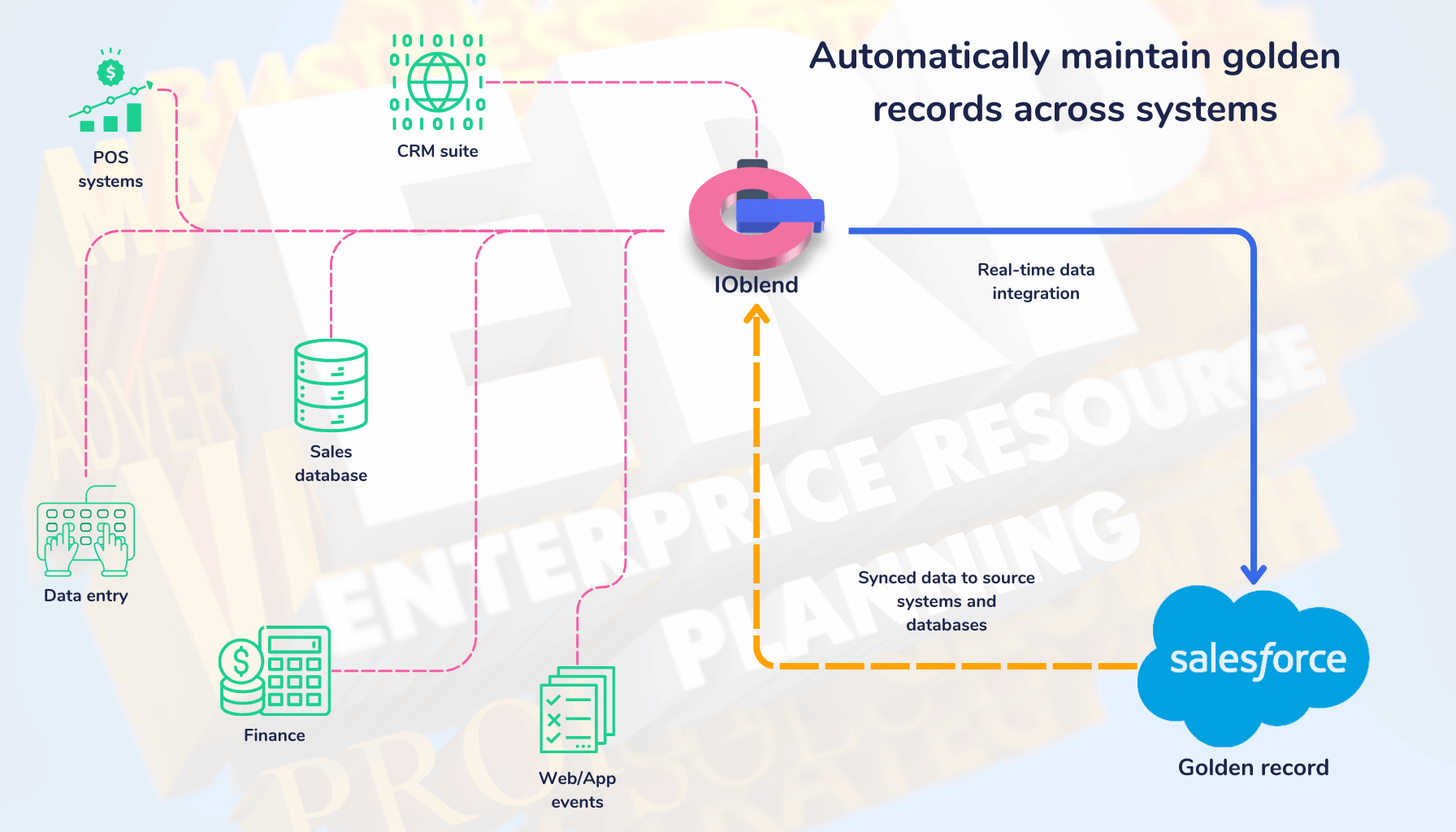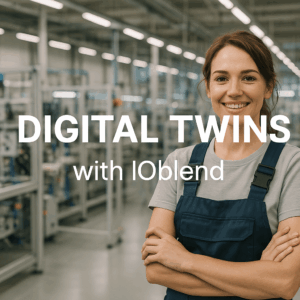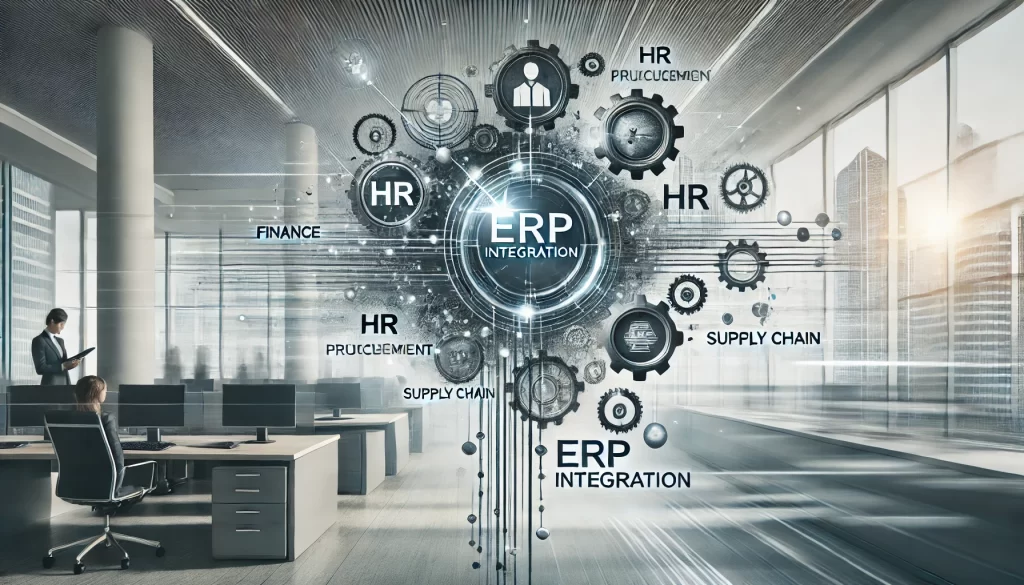The ERP Shortcut: How to Integrate Faster Than You Think
In recent months, we’ve tackled an increasing number of ERP implementation projects—upstream, downstream, you name it. Often, we’re brought in as the “firefighters,” rescuing projects that are delayed or going off-track. Why us? We are pretty good at complex, real-time multi-system syncing with ERP platforms in under a week. We’ll dive into how and why we can achieve this further down. But first, let’s explore the common data integration challenges that cause ERP projects to fail.
Why ERP projects often fail
Nine times out of ten, ERP projects run into trouble because development teams hit roadblocks with data integration. Whether it’s legacy or specialised systems, mismatched data formats, complex transformation rules, or siloed information, these challenges are often underestimated at the outset.
Typically, implementing an ERP system takes anywhere from six months to two years. The timeline depends on factors like the organisation’s size, the complexity of its existing systems, and business rules. For a small business, the task might just involve integrating a financial system, CRM, and sales data. Larger enterprises, however, deal with multiple operational systems, departments, and even a proliferation of spreadsheets. Integrating all these into a unified ERP platform is no small feat.
That’s why ERP deployments tend to be expensive and time-consuming, often dragging out even longer when unforeseen complexities arise. But does it have to be this way?
What Is an ERP system?
Before diving deeper, let’s quickly revisit the basics. An ERP (Enterprise Resource Planning) system centralises and streamlines core business operations like finance, human resources, procurement, and supply chain management. This unified system allows different departments to work on a single platform, providing a comprehensive, real-time view of the company’s operations and improving decision-making.
The ultimate goal of an ERP system is seamless integration across all departments, allowing information to flow freely and facilitating better coordination. But in practice, reaching that ideal can be somewhat of a challenge.
Top ERP vendors:
The top players have been around for donkey years and you are highly likely to find one in most companies.
- SAP: Popular for large, complex enterprise-grade solutions.
- Oracle: Known for robust analytics and database management.
- Microsoft Dynamics 365: A great choice for small to medium-sized businesses, especially with existing Microsoft tools.
- NetSuite (Oracle): A versatile cloud-based ERP solution for SMEs.
These established players dominate the market, but emerging cloud-based ERP solutions are increasingly catering to niche industries and specific business needs.
Common ERP Implementation Challenges
No matter the vendor, implementing their ERP system is never straightforward. Whether the business is upgrading the existing system or migrating to a competitor, companies face a variety of challenges that can derail even the best-laid plans. You can find countless ERP horror stories online—while they’re educational, I’ll save you the TL;DR and sum up the key pain points:
High costs and resource demands: The investment in software, training, and personnel goes well beyond software licenses. ERP projects consumed more than they had planned for.
Data quality and migration issues: Migrating data from legacy systems into a new ERP is a complex, time-consuming process. The data wasn’t what they’d expected and took a long time to mend it.
Legacy system integration: Synchronising older systems with modern ERPs is notoriously difficult. Missing documentation, obscure code, unclear business rules.
Customisation requirements: Every business has unique processes that require significant customisation of ERP solutions. Who would have ever thought that your business was so different from the rest?
Change management: Convincing employees to switch from their beloved spreadsheets to a new system always meets resistance. If you invested your career building and managing one, who could blame you?
Why data integration is a major challenge
Data integration is often the Achilles’ heel of any ERP implementation. Most organisations deal with a mix of legacy systems, each with different data formats, structures, and processes. As systems age and business needs evolve, so do data integration demands. At IOblend, we’ve built a whole business around solving this very problem.
Some common challenges we see include:
- Disparate data formats: Legacy systems often require significant data transformation efforts.
- Data silos: Different departments may operate in isolation, making data extraction and integration a nightmare.
- Data quality issues: Inconsistent or outdated data leads to inaccurate analytics and operational inefficiencies.
- Real-time data requirements: Modern ERP systems need to sync with IoT devices and supply chain systems in real time, particularly in sectors like. manufacturing.
- Security and compliance: Safeguarding sensitive data and adhering to regulations such as GDPR adds another layer of complexity
How IOblend simplifies ERP data integration
Now that we’ve outlined the common challenges with ERP implementations, let’s talk about how we help make these projects faster, cheaper, and far less painful.
IOblend was designed with one mission in mind: to simplify data integration. Nothing less, nothing more. It provides everything a data engineer needs to address integration challenges with ease and speed. And I talk about full end-to-end data integration with automated data, technical governance and resource management built in.

IOblend highlights:
- Real-time data integration: Whether it’s Salesforce, SAP, or Microsoft Dynamics 365, IOblend enables real-time updates for customer, financial, and transactional data.
- Code-first and Low/No-Code solutions: You get the best of both worlds—speed and flexibility. You can rapidly create data pipelines without needing custom development, but still retain control over your business logic, stored procedures, APIs, and more.
- Complex data pipelines: IOblend supports any cloud-based and on-premise data source, making it easy to integrate legacy systems with modern cloud applications.
- Automated data quality checks: With IOblend, you can ensure that the data entering your ERP is accurate, up-to-date, and trustworthy, with minimal supervision.
If you’re currently facing data integration issues with an ERP project or are in the planning stages, reach out to us. We’ve successfully delivered many ERP integrations, and we can save you time, money, and headaches. Whether you need to integrate a single system or an entire enterprise, we’re here to help.
IOblend presents a ground-breaking approach to IoT and data integration, revolutionizing the way businesses handle their data. It’s an all-in-one data integration accelerator, boasting real-time, production-grade, managed Apache Spark™ data pipelines that can be set up in mere minutes. This facilitates a massive acceleration in data migration projects, whether from on-prem to cloud or between clouds, thanks to its low code/no code development and automated data management and governance.
IOblend also simplifies the integration of streaming and batch data through Kappa architecture, significantly boosting the efficiency of operational analytics and MLOps. Its system enables the robust and cost-effective delivery of both centralized and federated data architectures, with low latency and massively parallelized data processing, capable of handling over 10 million transactions per second. Additionally, IOblend integrates seamlessly with leading cloud services like Snowflake and Microsoft Azure, underscoring its versatility and broad applicability in various data environments.
At its core, IOblend is an end-to-end enterprise data integration solution built with DataOps capability. It stands out as a versatile ETL product for building and managing data estates with high-grade data flows. The platform powers operational analytics and AI initiatives, drastically reducing the costs and development efforts associated with data projects and data science ventures. It’s engineered to connect to any source, perform in-memory transformations of streaming and batch data, and direct the results to any destination with minimal effort.
IOblend’s use cases are diverse and impactful. It streams live data from factories to automated forecasting models and channels data from IoT sensors to real-time monitoring applications, enabling automated decision-making based on live inputs and historical statistics. Additionally, it handles the movement of production-grade streaming and batch data to and from cloud data warehouses and lakes, powers data exchanges, and feeds applications with data that adheres to complex business rules and governance policies.
The platform comprises two core components: the IOblend Designer and the IOblend Engine. The IOblend Designer is a desktop GUI used for designing, building, and testing data pipeline DAGs, producing metadata that describes the data pipelines. The IOblend Engine, the heart of the system, converts this metadata into Spark streaming jobs executed on any Spark cluster. Available in Developer and Enterprise suites, IOblend supports both local and remote engine operations, catering to a wide range of development and operational needs. It also facilitates collaborative development and pipeline versioning, making it a robust tool for modern data management and analytics

ERP Cloud Migration With Live Data Sync
Seamless Core System Migration: The Move of Large-Scale Banking and Insurance ERP Data to a Modern Cloud Architecture ⛅ Did you know that core system migrations in large financial institutions, which typically rely on manual data mapping and validation, often require parallel runs lasting over 18 months? The Core Challenge The migration of multi-terabyte ERP and

Legacy ERP Integration to Modern Data Fabric
Warehouse Automation Efficiency: Migrating and Integrating Legacy ERP Data into a Modern Big Data Ecosystem 📦 Did you know? Analysts estimate that warehouses leveraging robust, real-time data integration see inventory accuracy improvements of up to 99%. The Convergence of WMS and Big Data Data professionals in logistics face a profound challenge extracting mission-critical operational data such

Dynamic Pricing with Agentic AI
The Agentic Edge: Real-Time Dynamic Pricing through AI-Driven Cloud Data Integration 📊 Did You Know? The most sophisticated dynamic pricing systems can process and react to market signals in under 100 milliseconds. The Evolution of Value Optimisation Dynamic Pricing and Revenue Management (DPRM) is a complex computational science. At its core, DPRM aims to sell the right

Smarter Quality Control with Cloud + IOblend
Quality Control Reimagined: Cloud, the Fusion of Legacy Data and Vision AI 🏭 Did You Know? Over 80% of manufacturing and quality data is considered ‘dark’ inaccessible or siloed within legacy on-premises systems, dramatically hindering the deployment of real-time, predictive Quality Control (QC) systems like Vision AI. Quality Control Reimagined The core concept of modern quality

Predictive Aircraft Maintenance with Agentic AI
Predictive Aircraft Maintenance: Consolidating Data from Engine Sensors and MRO Systems 🛫 Did you know that leveraging Big Data analytics for predictive aircraft maintenance can reduce unscheduled aircraft downtime by up to 30% Predictive Maintenance: The Core Concept Predictive Maintenance (PdM) in aviation is the strategic shift from a time-based or reactive approach to an ‘as-needed’ model,

Digital Twin Evolution: Big Data & AI with
The Industrial Renaissance: How Agentic AI and Big Data Power the Self-Optimising Digital Twin 🏭 Did You Know? A fully realised industrial Digital Twin, underpinned by real-time data, has been proven to reduce unplanned production downtime by up to 20%. The Digital Twin Evolution The Digital Twin is a sophisticated, living, virtual counterpart of a physical production system. It

